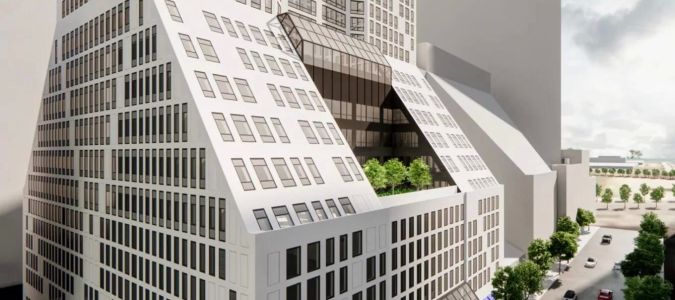The Sugar Refinery That Shaped Brooklyn: A Deep Dive Into 10 Jay Street
Brooklyn is a borough with a rich industrial history, and one of the buildings that truly encapsulates this history is 10 Jay Street. Located in the heart of Brooklyn’s waterfront, this building has played a pivotal role in the development of the area and, by extension, the city itself. Once a thriving sugar refinery, 10 Jay Street represents a piece of Brooklyn’s past that helped shape the Brooklyn we know today. In this article, we’ll take a deep dive into the history of 10 Jay Street, from its origins as a sugar refinery to its transformation into a modern office space that stands as a symbol of Brooklyn’s revitalization.
The Rise of Brooklyn’s Sugar Industry
The sugar industry played a significant role in the development of Brooklyn during the 19th and early 20th centuries. By the late 1800s, Brooklyn was one of the key players in the sugar refining industry, which had become a crucial part of the city’s economy. At the time, sugar was a commodity in high demand, with much of the world’s supply being processed in Brooklyn’s sugar refineries.
10 Jay Street, originally known as the American Sugar Refining Company, was one of the largest and most important sugar refineries in Brooklyn. The refinery was a major contributor to the local economy, employing thousands of workers and providing the city with a steady supply of refined sugar. The company’s operations were not just limited to sugar production; it was also involved in the transportation and distribution of sugar across the nation, cementing its place as a key player in the industry.
At its peak, the refinery was one of the largest in the world. The immense size of the facility, along with its proximity to the waterfront and transportation hubs, made it an ideal location for the operations of the American Sugar Refining Company. It wasn’t just an industrial building—it was a critical part of the infrastructure that supported Brooklyn’s growth and development during the industrial revolution.
The Transformation of 10 Jay Street
As the 20th century progressed, the sugar industry in Brooklyn began to decline. By the mid-1900s, 10 Jay Street, along with many other industrial buildings in the area, had become obsolete. The refinery shut down, and the building was left to stand vacant for many years. However, the story of 10 Jay Street didn’t end with the closure of the sugar refinery.
In the 21st century, as Brooklyn began to experience a resurgence in popularity, 10 Jay Street was one of the first buildings to undergo a dramatic transformation. The building was renovated and repurposed into modern office spaces, reflecting the changing landscape of Brooklyn’s economy. Today, 10 Jay Street serves as a symbol of the borough’s revitalization, offering modern amenities and a prime location for businesses in the heart of Brooklyn.
During the renovation, great care was taken to preserve the historical elements of the building. The design team was committed to maintaining the industrial aesthetic of the original structure while introducing modern features that would meet the needs of today’s businesses. The result is a unique blend of old and new, with exposed brick walls, steel beams, and large windows that offer stunning views of the surrounding neighborhood.
10 Jay Street’s Role in the Brooklyn Waterfront Revitalization
10 Jay Street is not just a historical landmark; it also plays a key role in the ongoing revitalization of the Brooklyn waterfront. The building’s renovation is part of a larger movement to transform the waterfront into a vibrant, mixed-use area that blends residential, commercial, and cultural spaces.
Brooklyn’s waterfront has long been an underutilized area, but over the past few decades, it has undergone significant redevelopment. 10 Jay Street stands at the center of this transformation, with its historic significance and modern design making it a focal point of the area’s reinvention. The building’s location along the water makes it a prime spot for businesses seeking a vibrant, urban environment, while also offering access to green spaces, restaurants, and cultural venues.
The renovation of 10 Jay Street was a key moment in the revitalization of the Brooklyn waterfront, and the building continues to attract businesses from a wide range of industries. Whether it’s tech startups, creative agencies, or design firms, 10 Jay Street has become a hub for innovation and entrepreneurship in Brooklyn, further cementing the area’s reputation as a desirable place to live and work.
Preserving History in a Modern Context
One of the most compelling aspects of 10 Jay Street’s transformation is its ability to blend history with modernity. The building’s historical significance as a sugar refinery is never lost, yet the space is equipped with the latest amenities and design features that make it an ideal location for contemporary businesses.
Throughout the renovation process, great care was taken to preserve the character of the building. Exposed brick walls, original steel beams, and large industrial windows have been retained, offering tenants a unique sense of history. At the same time, the building now features state-of-the-art infrastructure, including high-speed internet, modern HVAC systems, and eco-friendly lighting and materials. This balance of old and new is one of the key reasons why 10 Jay Street is so successful—its rich history provides a sense of character and authenticity, while its modern amenities make it a functional and efficient workspace.
The combination of historical preservation and modern design makes 10 Jay Street a unique and inspiring place to work. Tenants can enjoy the charm of a historic building while benefiting from the comforts and conveniences of a contemporary office space.
10 Jay Street: A Symbol of Brooklyn’s Growth
Today, 10 Jay Street stands as a symbol of Brooklyn’s growth and transformation. The building’s history as a sugar refinery is a reminder of the borough’s industrial past, while its current role as a modern office space highlights the dynamic changes taking place in the area.
Brooklyn has undergone a remarkable transformation over the past few decades, with industries shifting away from manufacturing and towards technology, creative services, and other knowledge-based industries. 10 Jay Street is a perfect representation of this shift—what was once a hub for industrial activity is now a thriving center for innovation and entrepreneurship. The building’s renovation is a testament to the resilience of Brooklyn’s economy, as it adapts to new industries while preserving its rich history.
Conclusion: 10 Jay Street and the Future of Brooklyn
The story of 10 Jay Street is a testament to the adaptability and resilience of Brooklyn. From its origins as a major sugar refinery to its modern-day role as a dynamic office space, the building has played an important part in shaping the borough’s history and its future. The renovation of 10 Jay Street highlights the importance of preserving the past while embracing the future—an approach that is at the heart of Brooklyn’s ongoing revitalization.
As Brooklyn continues to evolve, 10 Jay Street remains a symbol of the borough’s transformation, and its success as a modern office space is just one example of how the area is thriving. Whether you’re looking for office space in Brooklyn or simply interested in learning more about the borough’s industrial history, 10 Jay Street is a building that reflects the best of both worlds. To learn more about 10 Jay Street and explore leasing options, visit 10jayst.com.









